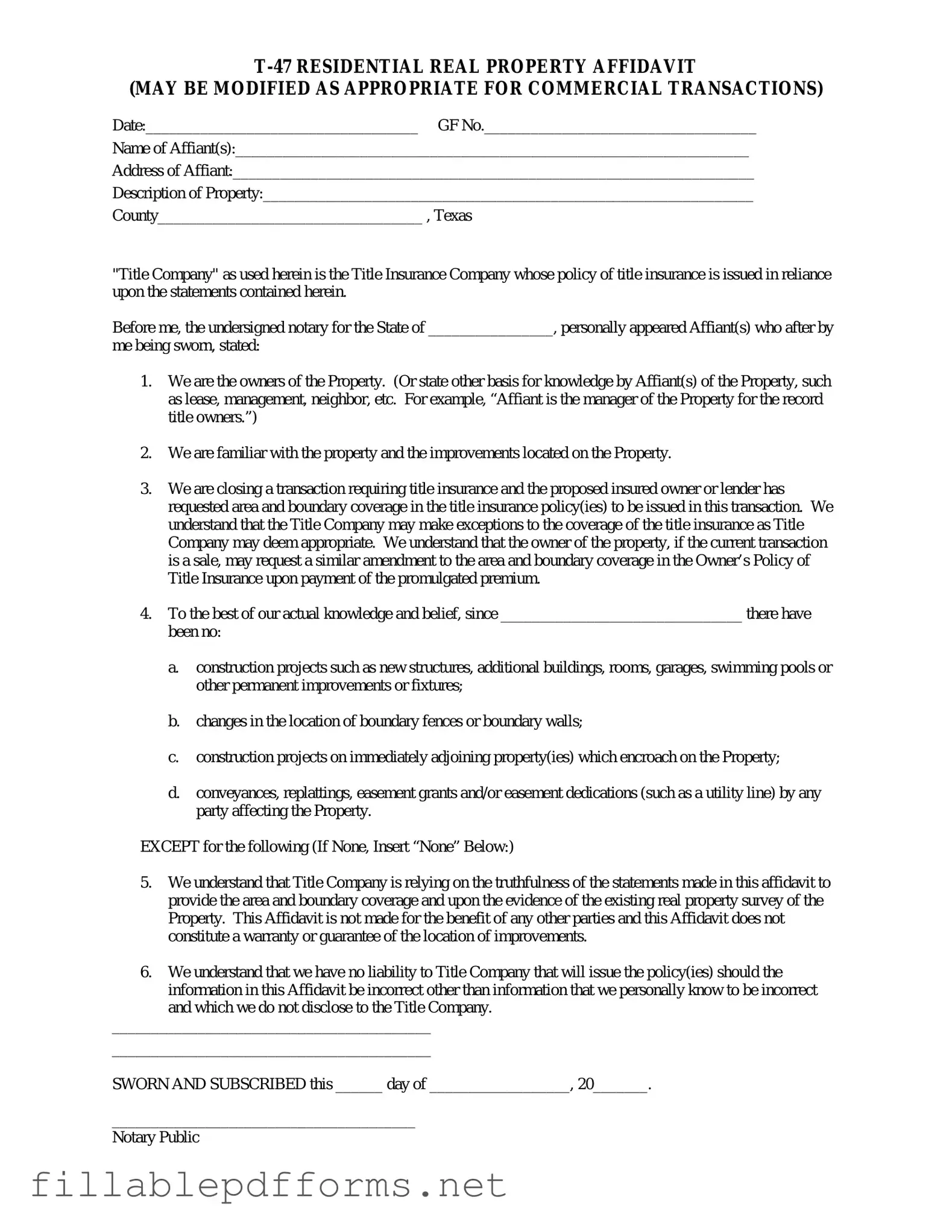Texas residential property affidavit T-47 PDF Template
The Texas residential property affidavit T-47 form is a legal document used in real estate transactions to affirm the ownership and details of a property. This form helps clarify the status of a property and can be essential for buyers, sellers, and lenders. Understanding its purpose and requirements can facilitate smoother property transactions in Texas.
Launch Editor Here
